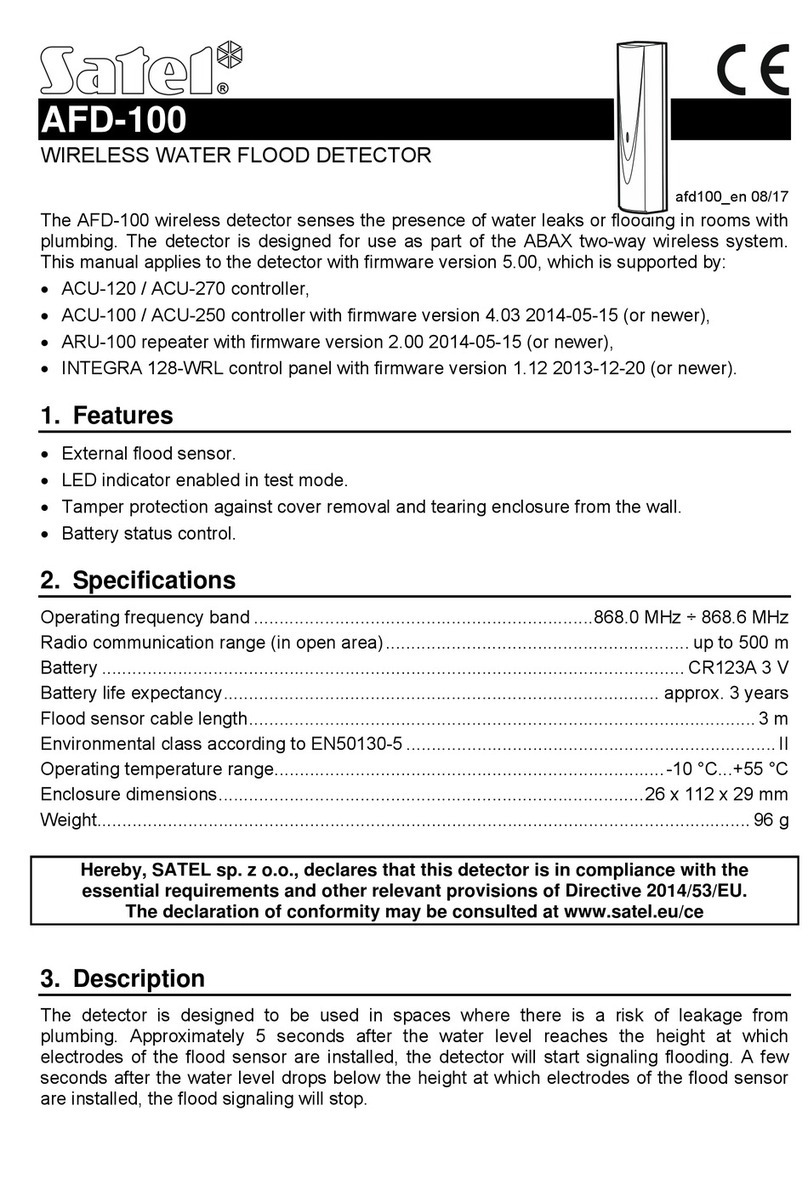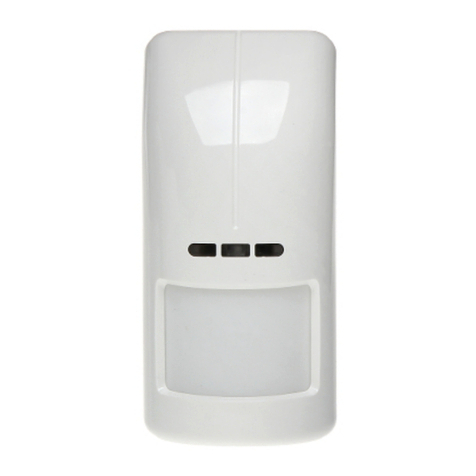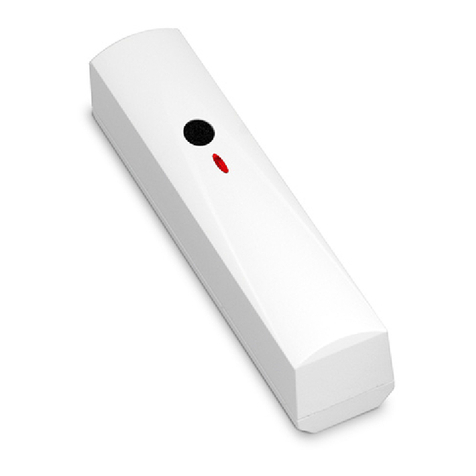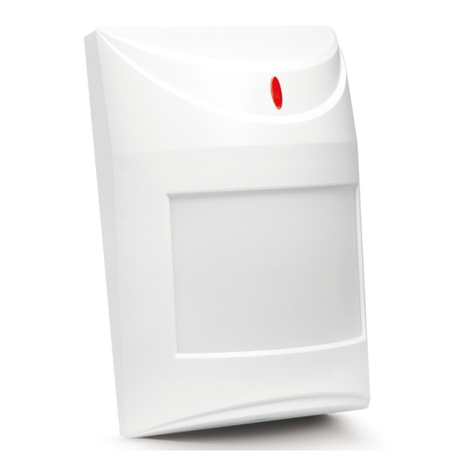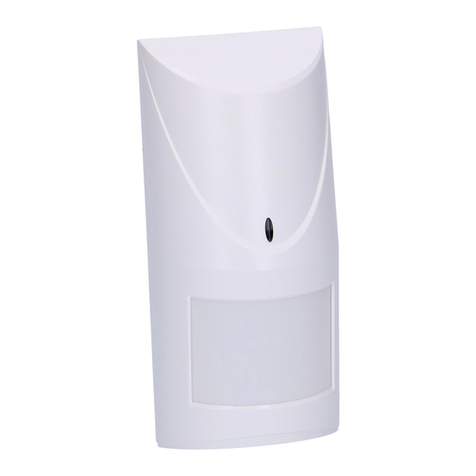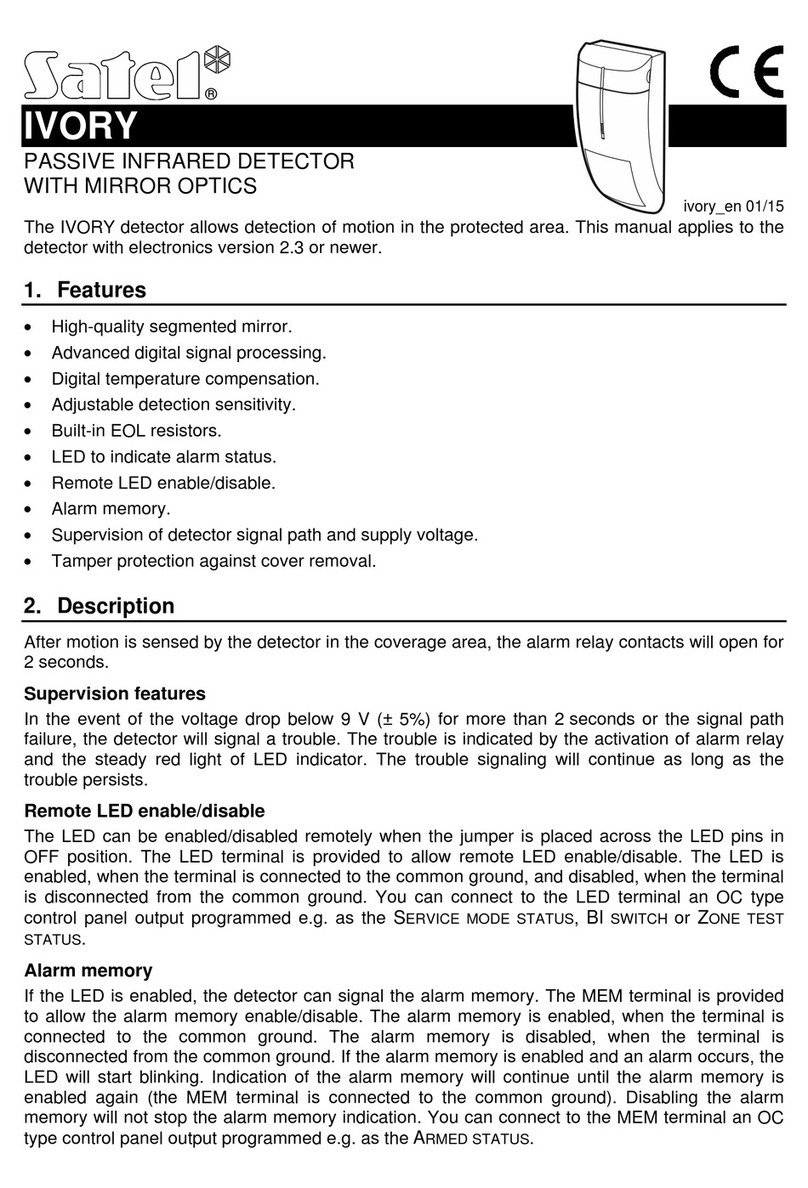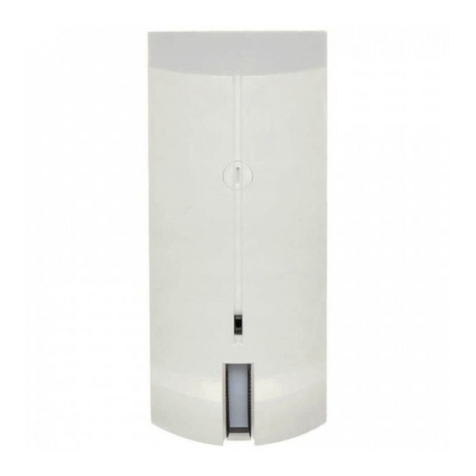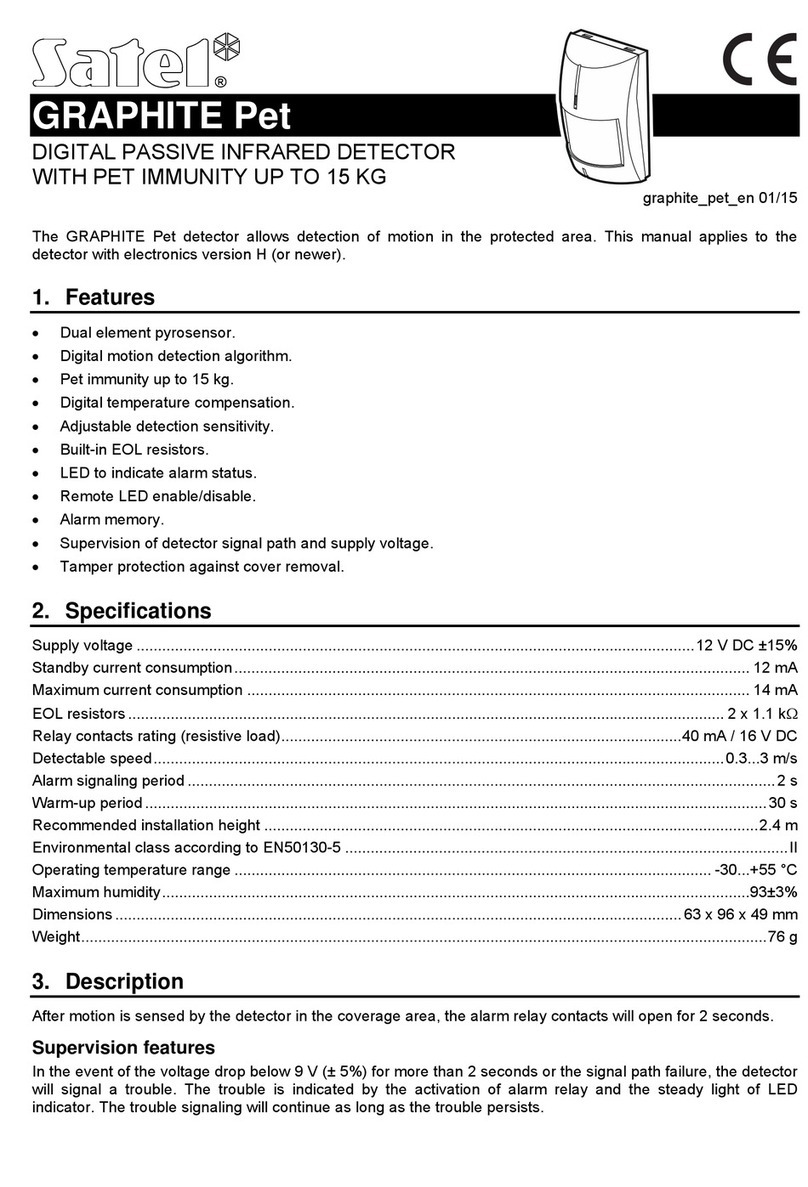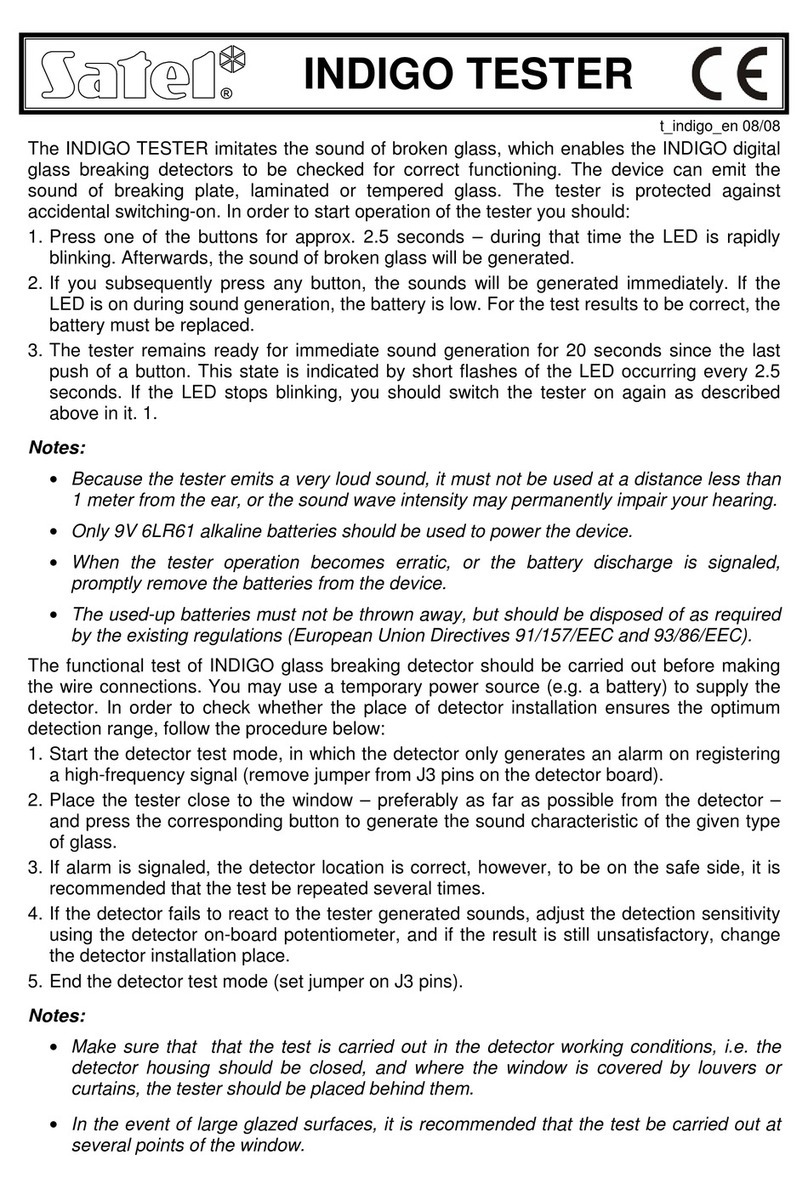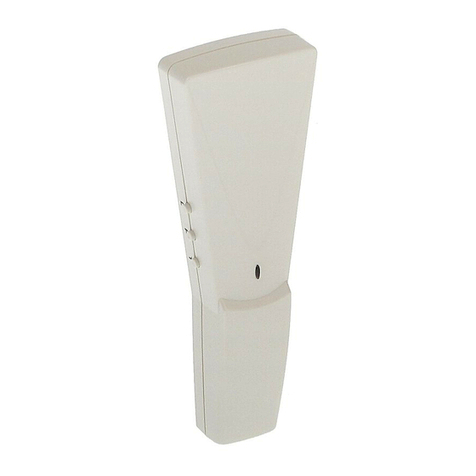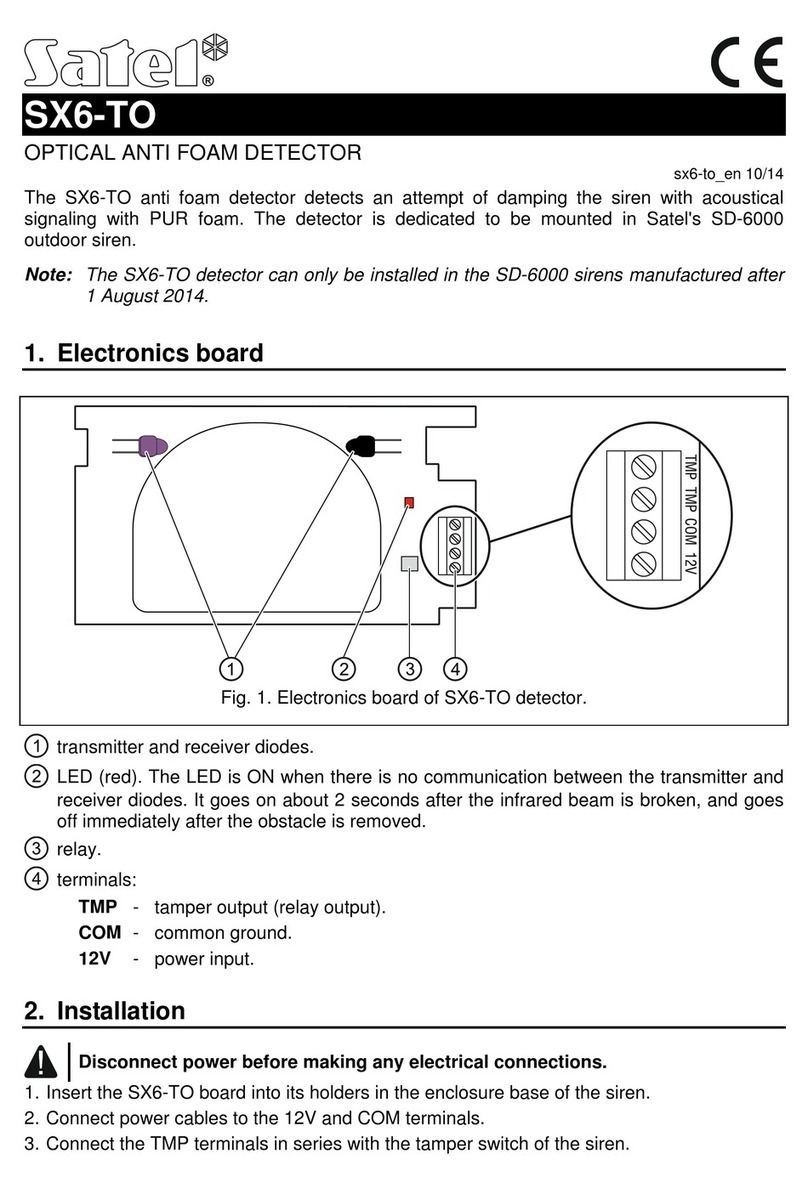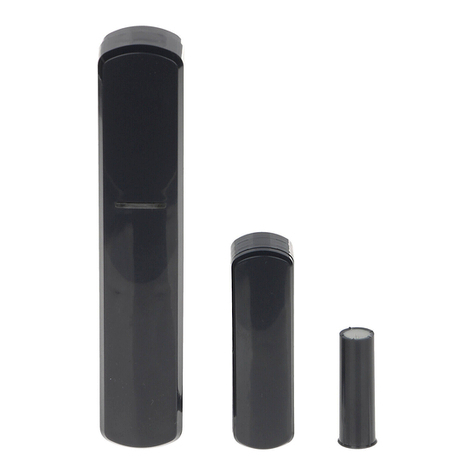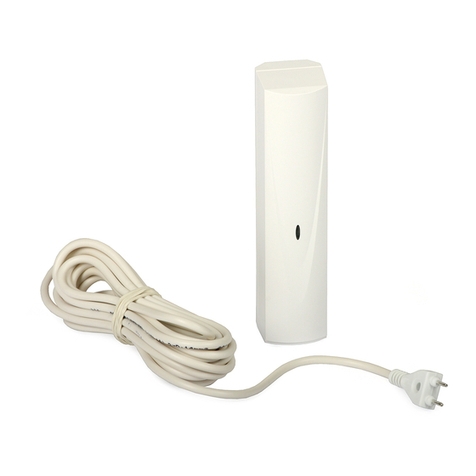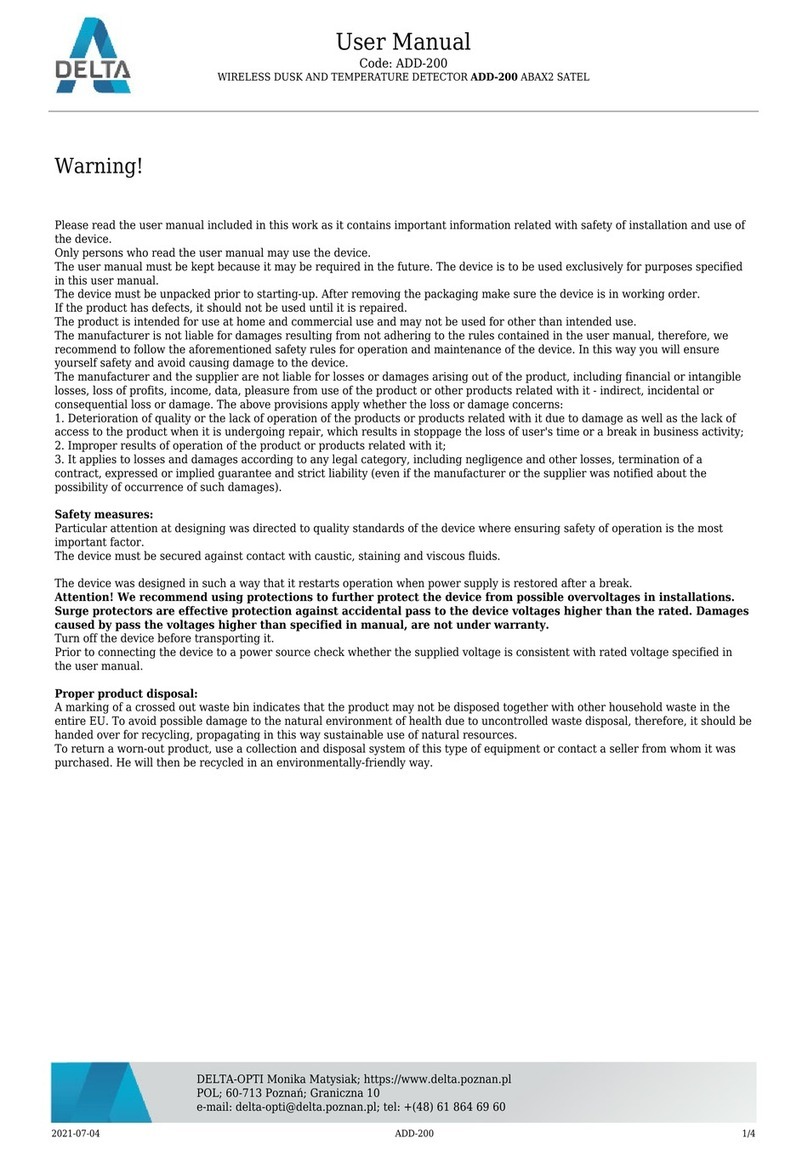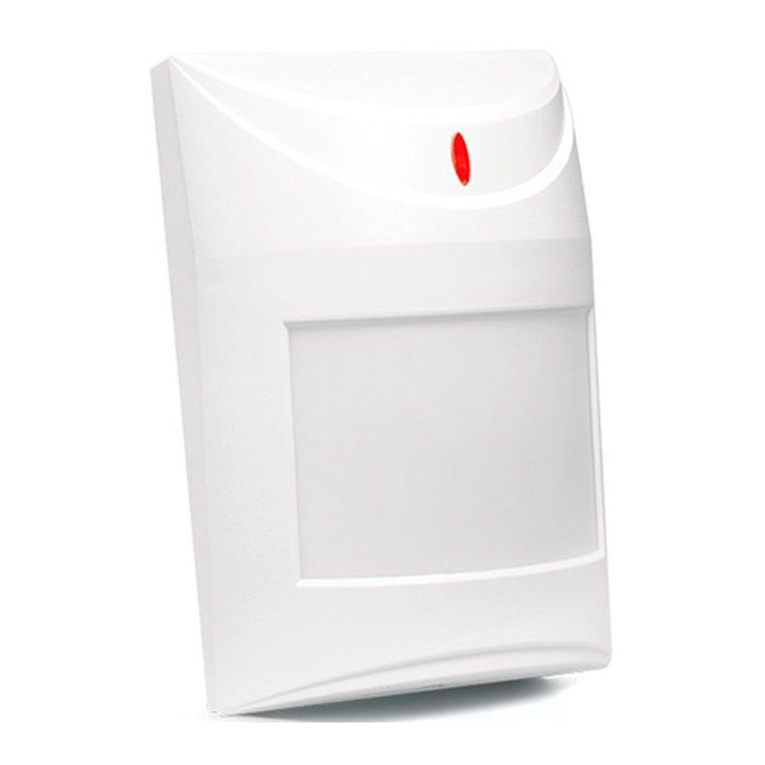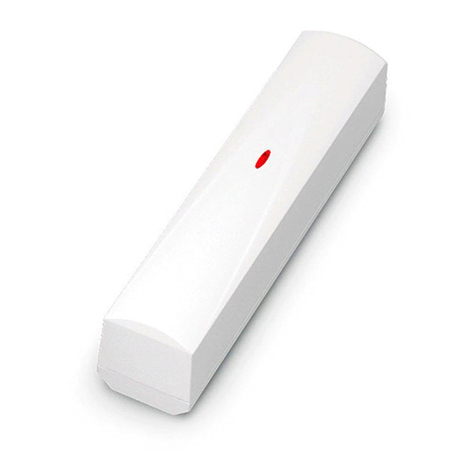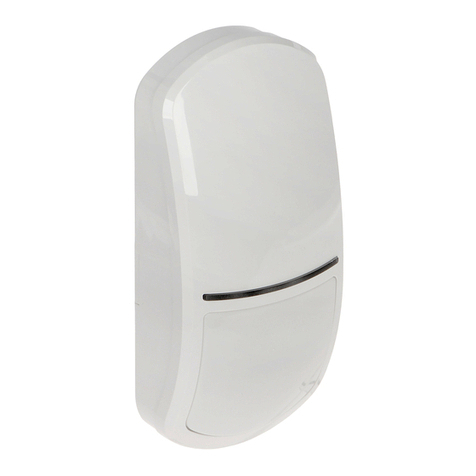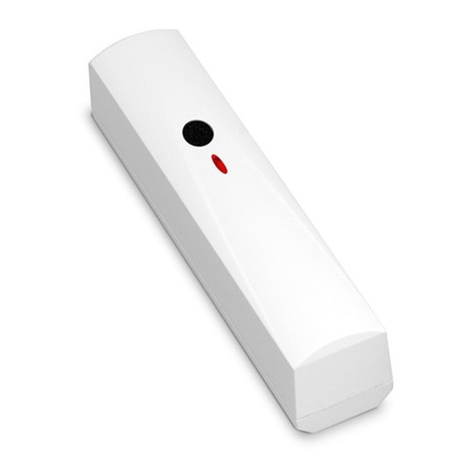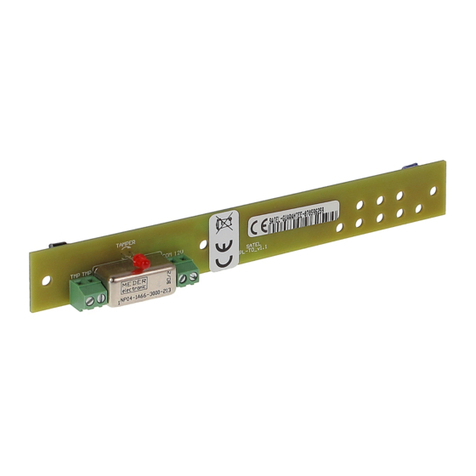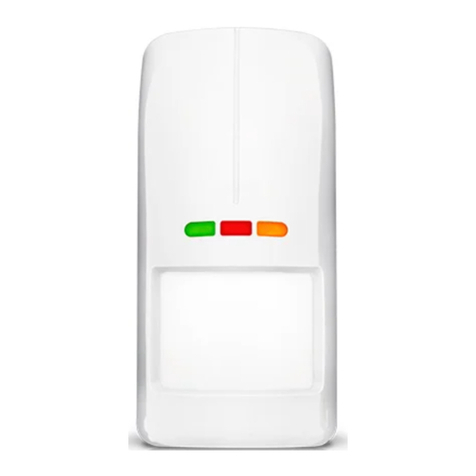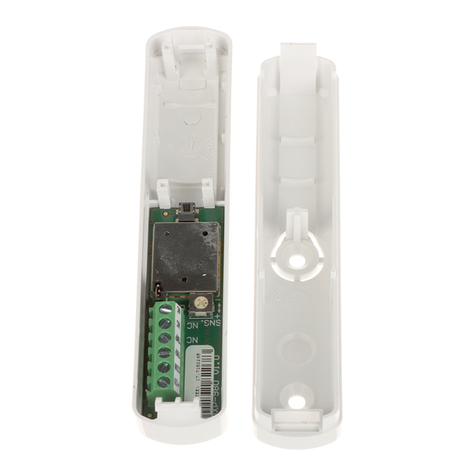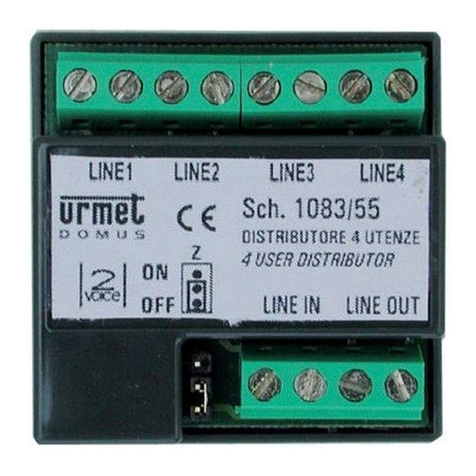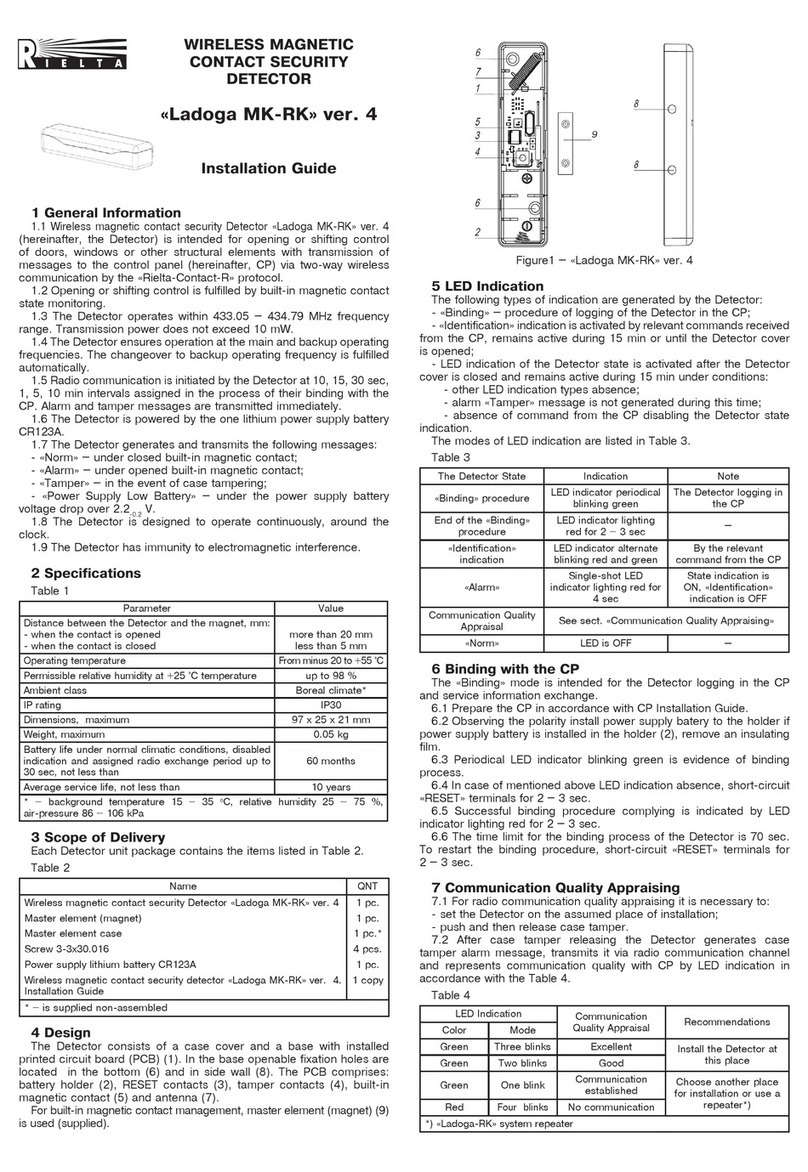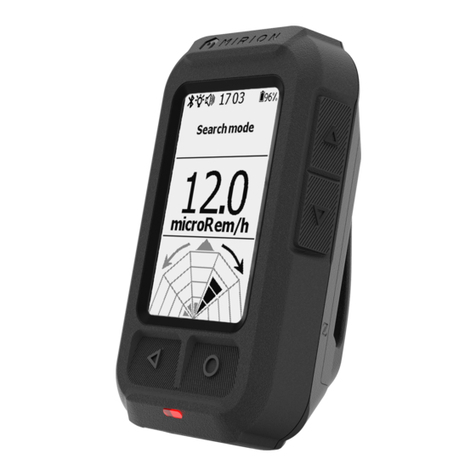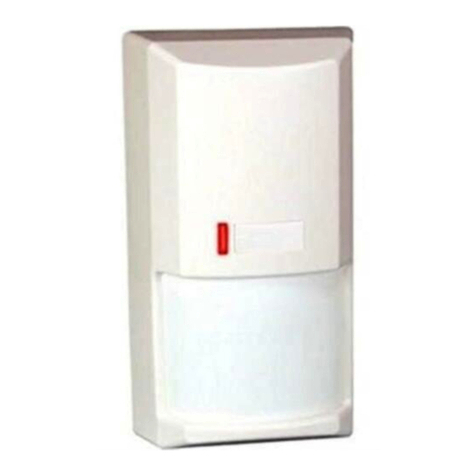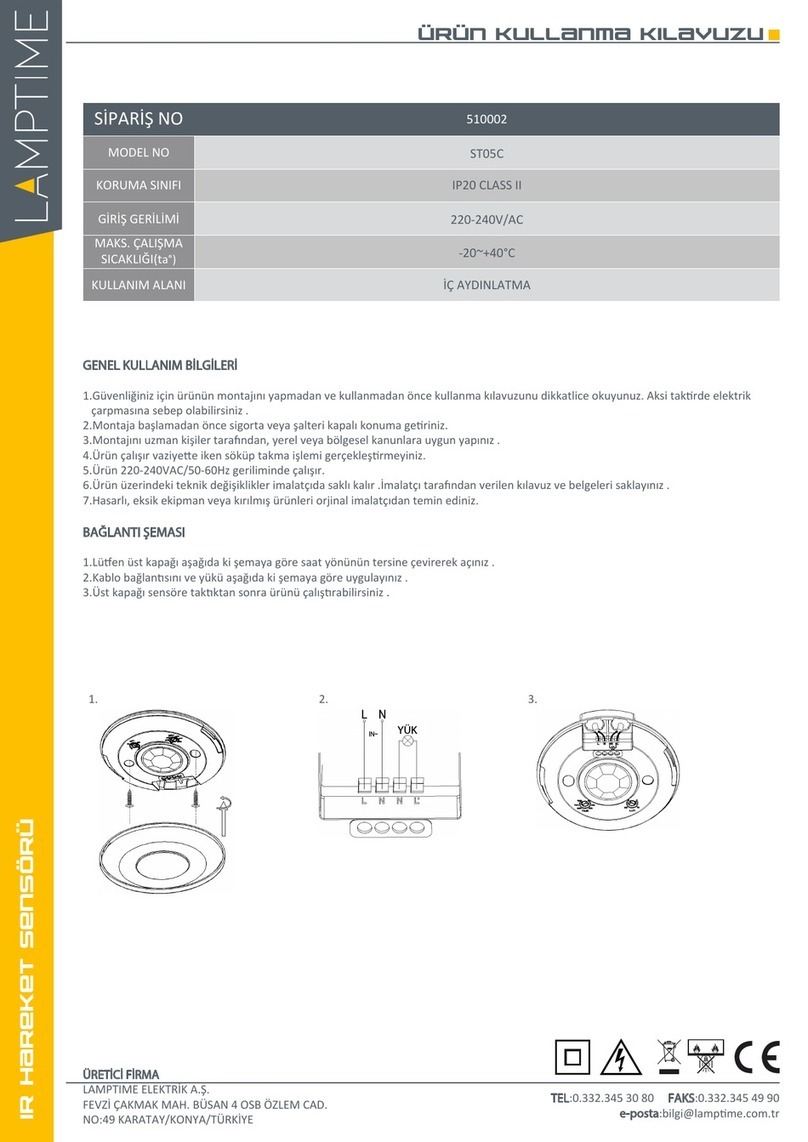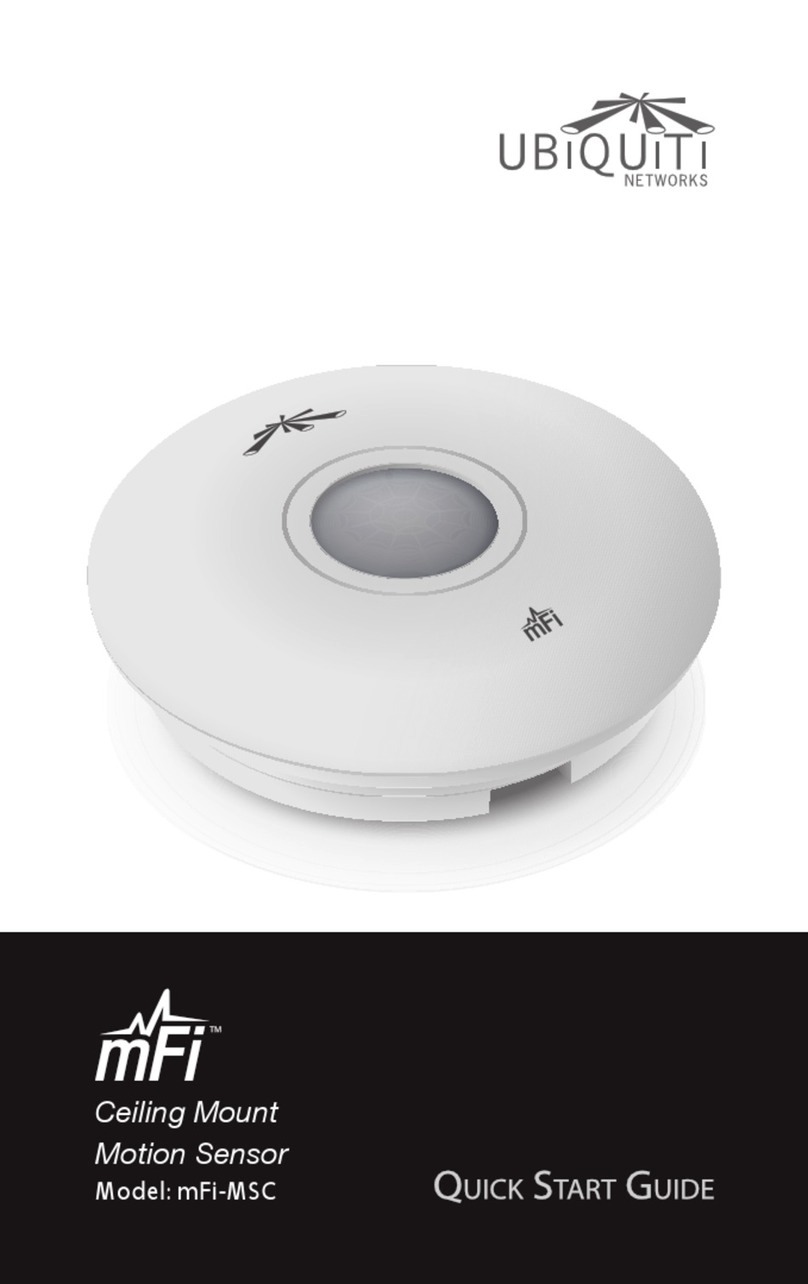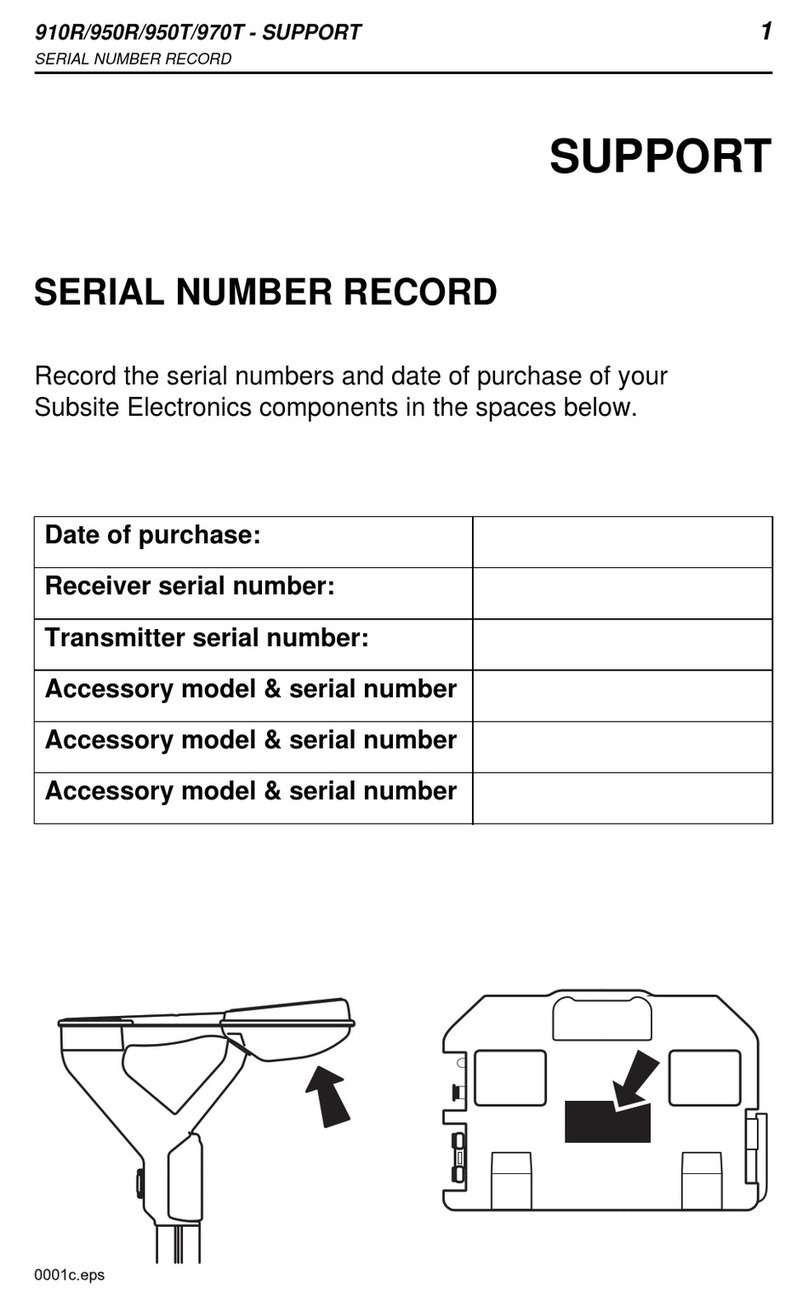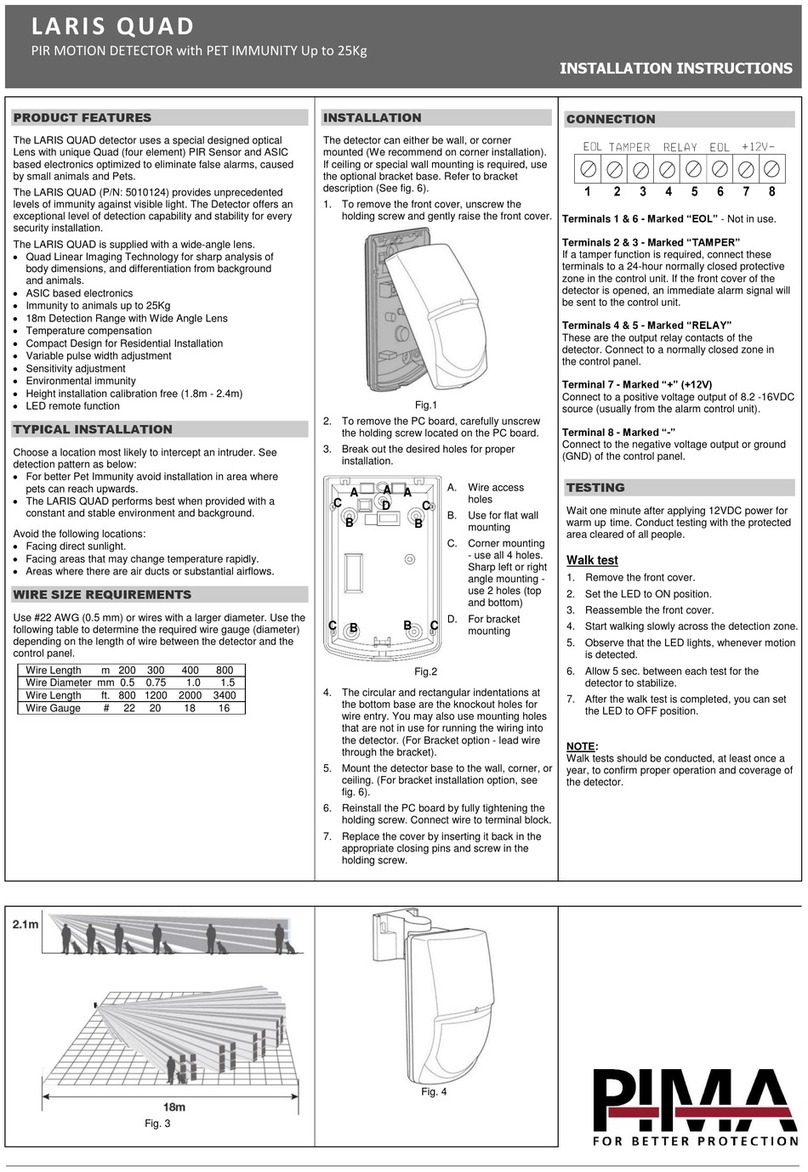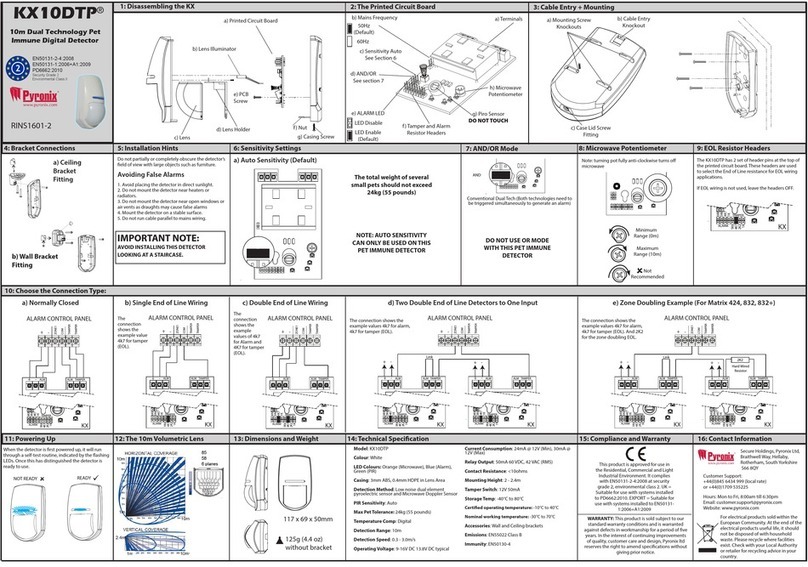®
WIRELESS
WATER FLOOD DETECTOR
AFD-100
afd100_en 08/08
The AFD-100 wireless water flood detector is designed for
operation as part of the ABAX two-way wireless system. It is
supported by the ACU-100 controller with firmware in version
1.06 or later. Approximately 5 seconds after the water level
reaches the height at which electrodes of the flood sensor are
installed, the detector will start signaling flooding. A few seconds
after the water level drops below the height at which electrodes
of the flood sensor are installed, the flood signaling will stop.
Explanations for Fig. 1:
1 - screen.
2 - terminals for the flood sensor connection.
3 - LED indicator. It lights red in the test mode only, indicating
communication with the controller (during polling), short-
circuit of the flood sensor electrodes, and opening of the
tamper contact.
4 - tamper contact, which responds to opening the housing and
pulling it off from the surface.
5 - CR123A 3 V lithium battery which ensures operation for
approx. 3-year period. The detector controls the battery
status. When the voltage drops to 2.6 V, the "low battery"
information is sent to the controller. The low battery
signaling continues until the battery is replaced.
1. Installation
The detector is designed for indoor installation.
Before mounting the detector permanently, check the level of signal received
from the detector by the ACU-100 controller and, if necessary, change the place
of installation so as to select the optimum location in terms of communication.
Install the battery inside the detector just before registering it in the controller. If
unregistered or having no communication with the controller, the detector will
consume more energy, which will reduce the battery life.
1. Open the housing.
2. Install the battery and add the detector to the wireless system (see the ACU-100 controller
user manual). A label with 7-digit serial number that should be entered during registration of
the detector in the system is provided on the screen on the electronics board.
3. Close the detector housing.
4. Select the place where the detector is to be installed and attach it there temporarily. It is
recommended that the detector be mounted as high as practicable. This will enable a better
radio communication range to be achieved, while avoiding the risk of the detector being
accidentally covered by personnel moving around the premises. Additionally, it should
prevent the detector electronics from accidental contact with water in case of flooding.
Fig. 1. View of the
detector PCB
